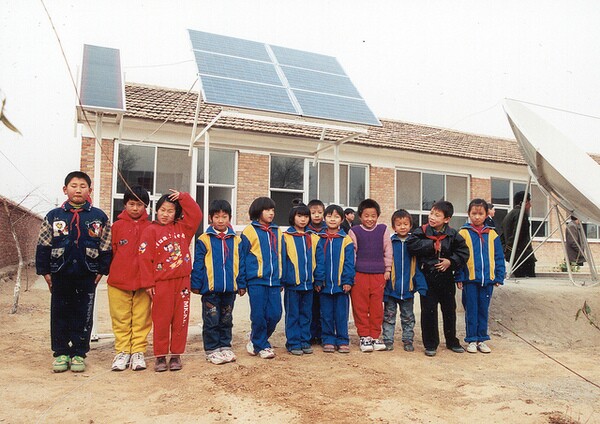Study: Solar Cell Price Drop Not Due To Underpaid Labor

For the last five years or so many solar advocates have lauded the startling drop in costs of solar panels made in China. That plummet in panel prices has made rooftop solar far more affordable for typical Californian property owners, destabilizing the entire solar thermal industry along the way.
But there's been an elephant in the room the whole time: China's legendary maltreatment of its tech sector factory workers. The notion that the last few years' rooftop solar revolution might have been made possible only by Chinese workers pulling in less than $2.50 an hour and working 60-hour weeks hasn't gotten a whole lot of mention outsie of the business press.
But a new study by MIT and the National Renewable Energy Laboratory (NREL) suggests that low pay for Chinese solar panel workers isn't the reason that those solar panel prices have dropped to about a quarter the cost they were in 2004 or so. Instead, it's China's investment in manufacturing capacity and streamlining the supply chain that made those prices fall, suggesting that American solar manufacturers may well be able to compete even if they pay their workers a living wage.
The study, published in the journal Energy and Environmental Science, suggests that the large capacity of Chinese solar manufacturing plants compared to those in the U.S. gives Chinese manufacturers more leverage over materials suppliers. That helps keep materials prices lower for Chinese manufacturers. Clustering of solar factories in specific regions such as Anhui Province also provides cost savings.
Lack of regulations compared to the U.S. may also play a role: the study's authors cite speedy deployment of new manufacturing plants as another factor in China's cost-competitiveness.
All told, these infrastructural advantages worked out to close to a 23 percent cost advantage for Chinese factories.
With technological innovations cutting the cost of solar cell fabrication even further, suggest the authors, even that advantage China holds over U.S. manufacturers could dwindle. If the U.S. government adopts policies that promote domestic solar manufacturing more effectively, we might yet see a home-grown solar industry that pays better wages than Foxconn.


